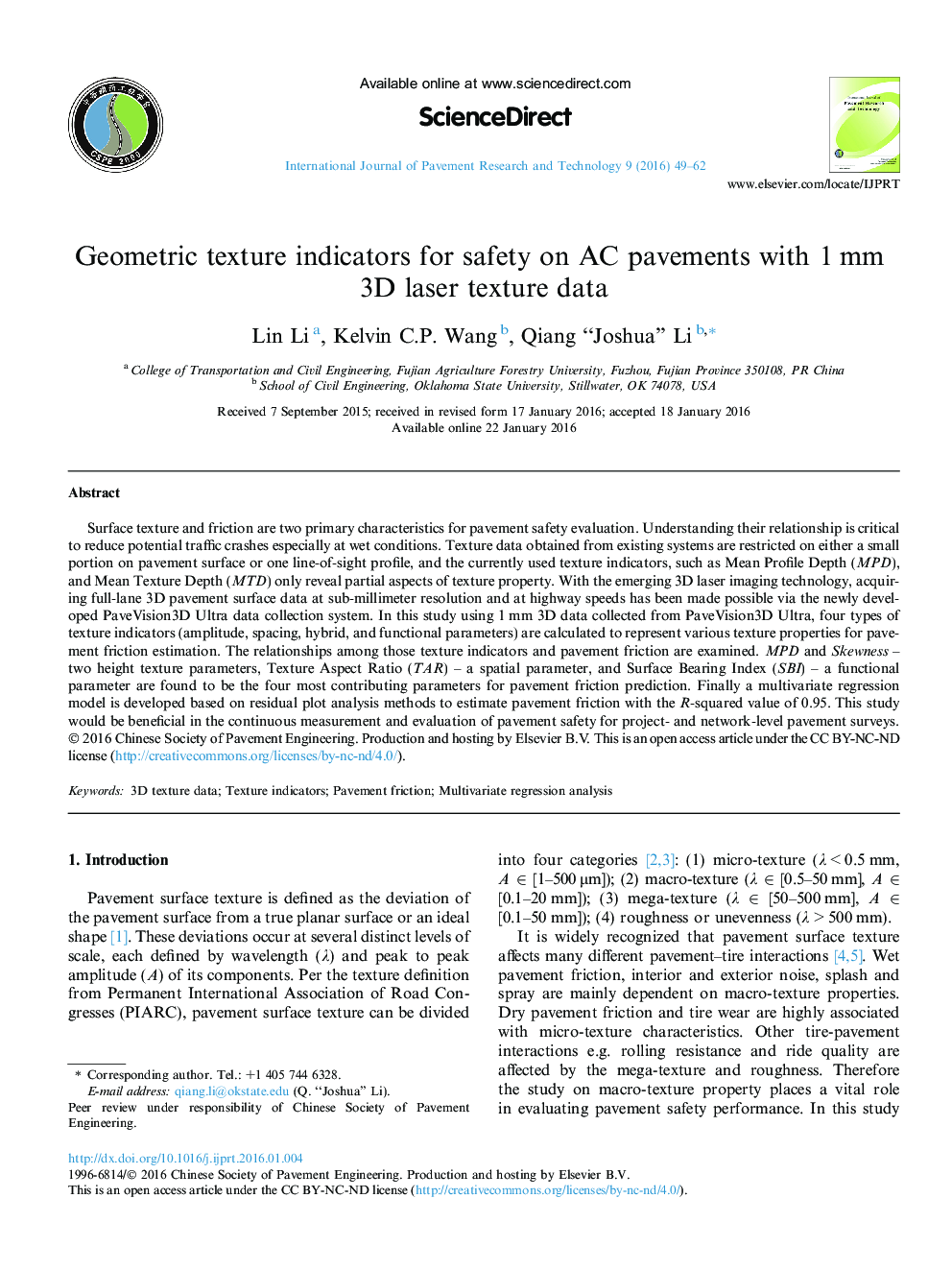| Article ID | Journal | Published Year | Pages | File Type |
|---|---|---|---|---|
| 275351 | International Journal of Pavement Research and Technology | 2016 | 14 Pages |
Surface texture and friction are two primary characteristics for pavement safety evaluation. Understanding their relationship is critical to reduce potential traffic crashes especially at wet conditions. Texture data obtained from existing systems are restricted on either a small portion on pavement surface or one line-of-sight profile, and the currently used texture indicators, such as Mean Profile Depth (MPD), and Mean Texture Depth (MTD) only reveal partial aspects of texture property. With the emerging 3D laser imaging technology, acquiring full-lane 3D pavement surface data at sub-millimeter resolution and at highway speeds has been made possible via the newly developed PaveVision3D Ultra data collection system. In this study using 1 mm 3D data collected from PaveVision3D Ultra, four types of texture indicators (amplitude, spacing, hybrid, and functional parameters) are calculated to represent various texture properties for pavement friction estimation. The relationships among those texture indicators and pavement friction are examined. MPD and Skewness – two height texture parameters, Texture Aspect Ratio (TAR) – a spatial parameter, and Surface Bearing Index (SBI) – a functional parameter are found to be the four most contributing parameters for pavement friction prediction. Finally a multivariate regression model is developed based on residual plot analysis methods to estimate pavement friction with the R-squared value of 0.95. This study would be beneficial in the continuous measurement and evaluation of pavement safety for project- and network-level pavement surveys.
